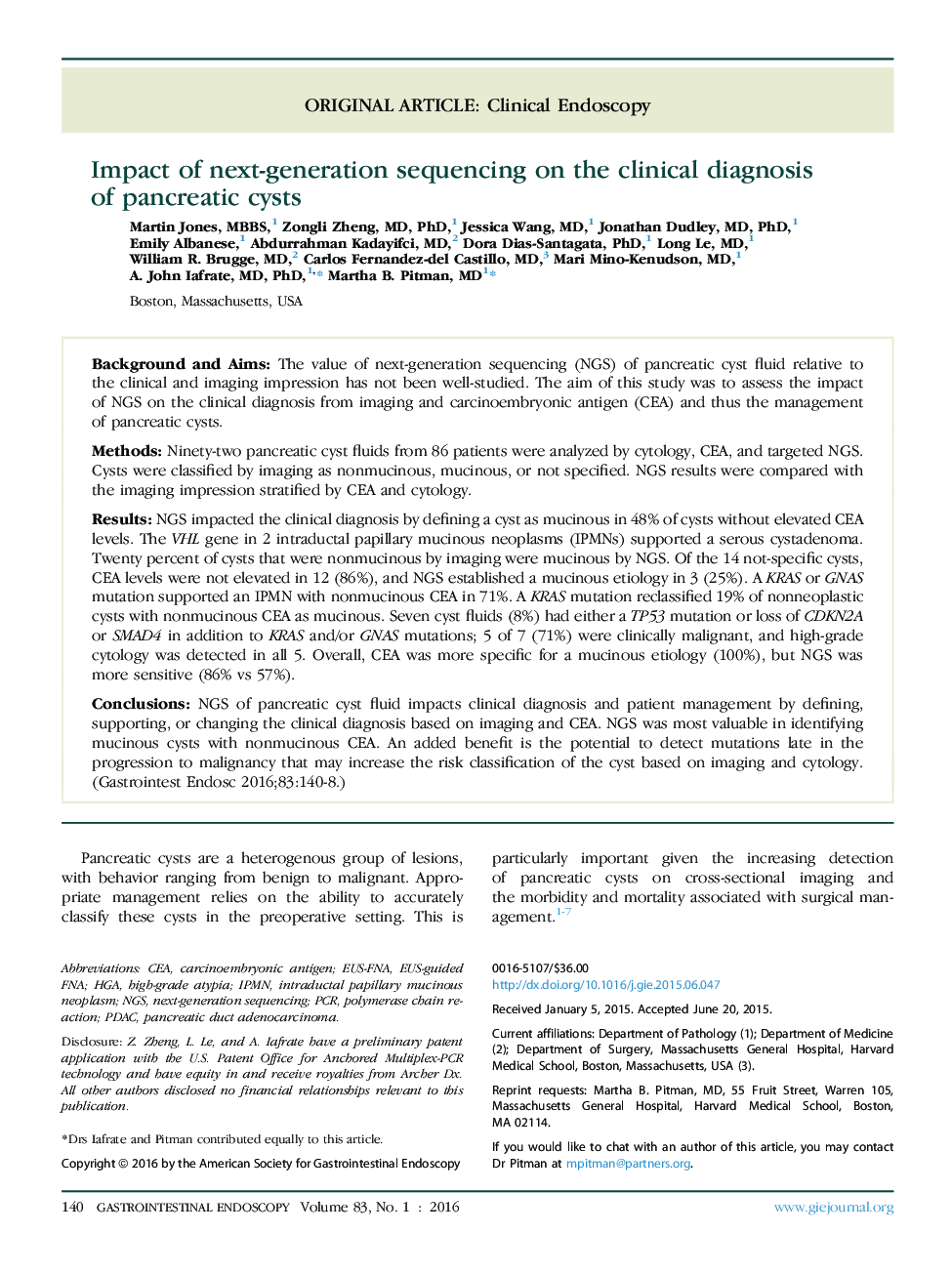| کد مقاله | کد نشریه | سال انتشار | مقاله انگلیسی | نسخه تمام متن |
|---|---|---|---|---|
| 6097254 | 1210283 | 2016 | 9 صفحه PDF | دانلود رایگان |

Background and AimsThe value of next-generation sequencing (NGS) of pancreatic cyst fluid relative to the clinical and imaging impression has not been well-studied. The aim of this study was to assess the impact of NGS on the clinical diagnosis from imaging and carcinoembryonic antigen (CEA) and thus the management of pancreatic cysts.MethodsNinety-two pancreatic cyst fluids from 86 patients were analyzed by cytology, CEA, and targeted NGS. Cysts were classified by imaging as nonmucinous, mucinous, or not specified. NGS results were compared with the imaging impression stratified by CEA and cytology.ResultsNGS impacted the clinical diagnosis by defining a cyst as mucinous in 48% of cysts without elevated CEA levels. The VHL gene in 2 intraductal papillary mucinous neoplasms (IPMNs) supported a serous cystadenoma. Twenty percent of cysts that were nonmucinous by imaging were mucinous by NGS. Of the 14 not-specific cysts, CEA levels were not elevated in 12 (86%), and NGS established a mucinous etiology in 3 (25%). A KRAS or GNAS mutation supported an IPMN with nonmucinous CEA in 71%. A KRAS mutation reclassified 19% of nonneoplastic cysts with nonmucinous CEA as mucinous. Seven cyst fluids (8%) had either a TP53 mutation or loss of CDKN2A or SMAD4 in addition to KRAS and/or GNAS mutations; 5 of 7 (71%) were clinically malignant, and high-grade cytology was detected in all 5. Overall, CEA was more specific for a mucinous etiology (100%), but NGS was more sensitive (86% vs 57%).ConclusionsNGS of pancreatic cyst fluid impacts clinical diagnosis and patient management by defining, supporting, or changing the clinical diagnosis based on imaging and CEA. NGS was most valuable in identifying mucinous cysts with nonmucinous CEA. An added benefit is the potential to detect mutations late in the progression to malignancy that may increase the risk classification of the cyst based on imaging and cytology.
Journal: Gastrointestinal Endoscopy - Volume 83, Issue 1, January 2016, Pages 140-148